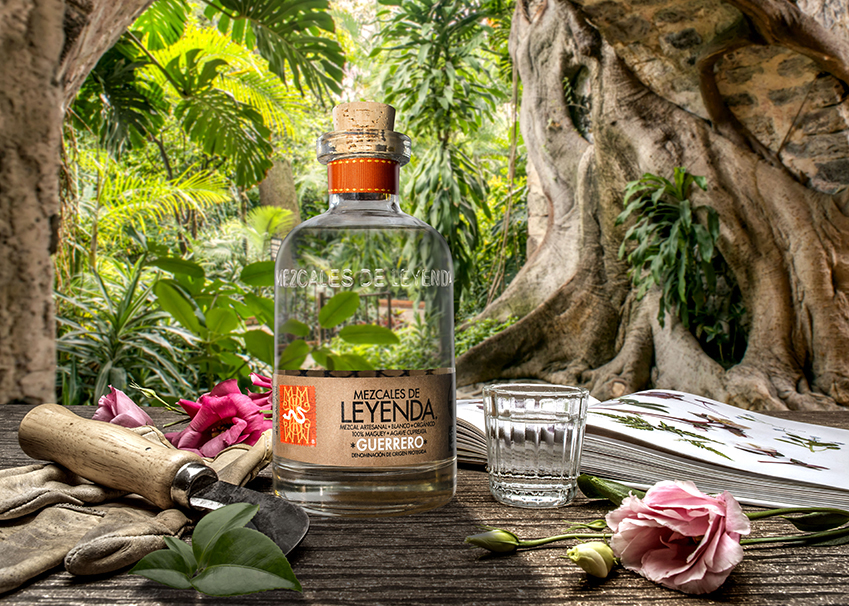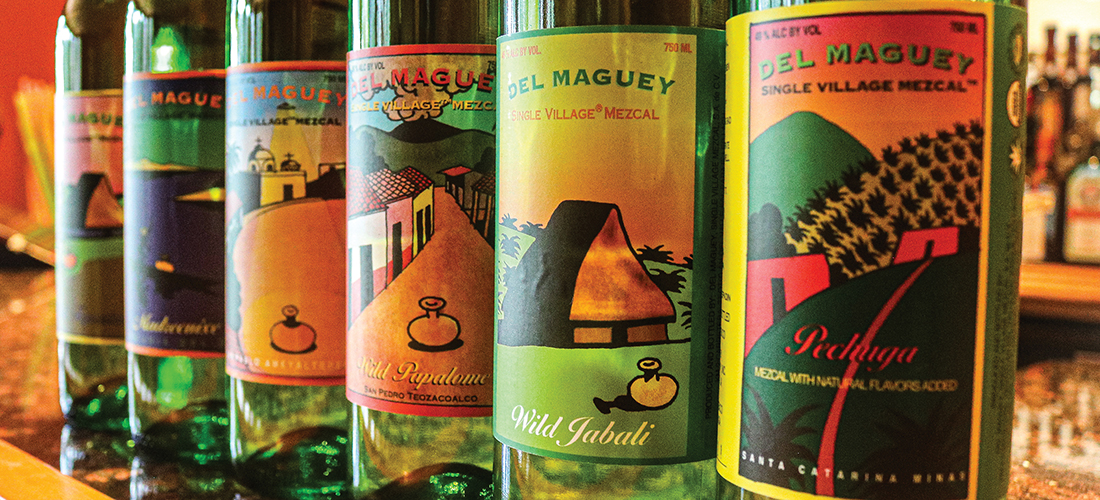Tequila, the beloved spirit originating from Mexico, comes in various flavors and styles, captivating enthusiasts worldwide. One of the most intriguing characteristics of tequila is its smokiness, which adds depth and complexity to its taste profile. In this comprehensive guide, we delve into the world of smoky tequilas, exploring the factors that contribute to their distinctive flavor and highlighting some notable options for aficionados to savor.
Smoky Tequila
Before delving into specific brands and varieties, it’s essential to grasp what contributes to the smokiness in tequila. Unlike some other spirits, such as whiskey, where smokiness often arises from the aging process in charred barrels, tequila’s smoky flavor primarily stems from the production method and the type of agave used.
Production Method
Traditional tequila production involves roasting agave hearts, known as piñas, in ovens before fermentation. This roasting process imparts a smoky essence to the agave, which carries through to the final product. The intensity of smokiness can vary depending on factors such as the duration and temperature of roasting.
Type of Agave
The type of agave used in tequila production also influences its smokiness. Agave varieties such as espadín, commonly used in mezcal production, tend to yield smokier flavors compared to others. The agave’s growing conditions and maturity at harvest further contribute to the complexity of flavors, including smokiness.
Exploring Smoky Tequila Varieties
Now that we have a foundational understanding of what makes tequila smoky, let’s explore some notable varieties renowned for their rich, smoky profiles.
Montelobos Mezcal Joven

Origin: Mexico
Tasting Notes: This mezcal offers a bold, smoky flavor with hints of peppery spice. The organic fermentation process and use of espadín agaves contribute to its distinct smokiness. Notes of roasted jalapeno permeate the palate, creating a harmonious balance of heat and smoke.
Montelobos Espadín Joven, a mezcal crafted in the heart of Oaxaca, Mexico, is known for its distinct smoky character. But what exactly makes this spirit so reminiscent of a bonfire under a starry sky?
The secret lies in the traditional production process, specifically the roasting of the agave hearts. Here’s how it contributes to the smokiness:
-
Underground Roasting: Unlike tequilas where the agave piñas are baked above ground, Montelobos Espadín Joven uses Espadín agave hearts roasted in earthen pits lined with volcanic rock. Wood fires fueled by oak or mesquite are lit beneath the pits, infusing the agave with smoky goodness.
-
Caramelization: The intense heat of the roasting process breaks down the agave’s sugars, causing them to caramelize. This caramelization not only contributes to the sweetness of the mezcal but also adds depth and complexity, with smoky notes being a prominent feature.
-
Smoke Absorption: During the roasting, the agave hearts spend hours directly exposed to wood smoke. As the agave releases moisture and shrinks, it naturally absorbs the smoke particles, further intensifying the smoky character of the final spirit.
Montelobos Espadín Joven, being a joven (“young”) mezcal, isn’t aged. This means the smoky flavors imparted during roasting aren’t mellowed by time in barrels, leaving you with a fresh and pronounced taste of smoke alongside the grassy and vegetal notes of the Espadín agave.
Mezcales de Leyendas Guerrero

Origin: Mexico
Tasting Notes: Production begins with a unique three-day cooking process in underground ovens lined with lava rocks, resulting in a pronounced smoky flavor. Despite its smokiness, this mezcal retains subtle notes of milk, greens, and yogurt, culminating in a lively bitter finish.
Mezcales de Leyendas Guerrero offers a unique mezcal experience, balancing smoky notes with a surprising sweetness. Here’s a look at the agave and production methods that contribute to this distinctive profile:
-
Agave Cupreata: This mezcal is made with wild Cupreata agave, also known as Papalote or Ancho. Compared to the widely used Espadín agave, Cupreata is less common and known for its naturally sweeter character.
-
Wild and Smoky: The Cupreata agaves for Mezcales de Leyendas Guerrero grow wild under a canopy of oak trees. During their 7-10 year maturity period, they absorb smoke from natural fires and the surrounding environment. This contributes to a subtler smokiness compared to some mezcals.
-
Roasting Process: While specific details about Mezcales de Leyendas Guerrero’s production aren’t public, most artisanal mezcals use traditional roasting methods in earthen pits. This process naturally imparts smoke flavors to the agave hearts.
-
Double Distillation: Mezcales de Leyendas Guerrero undergoes double distillation in copper pots. While distillation concentrates the agave’s essence, it can also slightly reduce smokiness.
The interplay of these factors creates the Mezcales de Leyendas Guerrero’s signature taste. The wild Cupreata agave contributes sweetness, while the smoke from its environment and the roasting process adds a subtle smokiness that complements the agave’s natural sugars.
Here’s a quick comparison:
-
Smoke Level: Compared to mezcals known for intense smoke, like some Espadín varieties, Mezcales de Leyendas Guerrero offers a gentler smokiness.
-
Sweetness: The Cupreata agave and potentially less-aggressive smoke influence from the roasting pits result in a sweeter profile compared to smokier mezcals.
Mezcal Vago Elote

Origin: Mexico
Tasting Notes: Known for its roasted agave sweetness, Mezcal Vago Elote offers a delightful interplay of smokiness and sweetness. Ideal for those who prefer bold flavors, it delivers a distinctive smoky character while maintaining a harmonious balance with other tasting notes.
Mezcal Vago Elote stands out for its unique smoky profile with a surprising twist – hints of roasted corn. Let’s delve into the reasons behind its smokiness and how the corn influence plays in:
-
Smoking with Tradition: Like most mezcals, Vago Elote utilizes the traditional method of roasting agave hearts in underground pits. Burning wood, often oak or mesquite, fuels the fires below, infusing the agave with smoky goodness as it cooks.
-
A Touch of Espadín: Vago Elote uses Espadín agave, a popular choice known for its versatility and ability to hold smoke flavors well. The Espadín itself contributes some vegetal and grassy notes, but the smokiness takes center stage.
-
The Elote Twist: Here’s where Vago Elote breaks the mold. Between the second and third distillation stages, roasted corn kernels are introduced. This unique step adds a layer of sweetness and a subtle corn aroma that complements, rather than overpowers, the smokiness.
The interplay between these elements creates a complex and intriguing flavor profile:
-
Smoke Forward: Despite the corn influence, the smokiness from the roasting process remains the dominant flavor in Vago Elote.
-
Corn Harmony: The roasted corn adds a touch of sweetness and a hint of cornbread-like aroma, creating a harmonious balance with the smokiness.
-
Fruity Notes: In addition to the smoke and corn, some tasters report notes of tropical fruits and a touch of mint in the finish, further enriching the overall experience.
Del Maguey Vida

Origin: Mexico
Tasting Notes: Widely available in local bars, Del Maguey Vida combines sweet vanilla undertones with a dominant smoky flavor. Its versatility makes it a popular choice for mixed drinks, where its smokiness adds depth and complexity to cocktails.
Del Maguey Vida is a popular mezcal known for being a good starting point for those new to the world of smoky agave spirits. But what exactly makes this mezcal smoky? Let’s explore the production process and the role of smoke in its flavor profile.
-
Espadín Agave: Del Maguey Vida uses Espadín agave, a common choice for mezcal due to its abundance and versatility. Espadín readily absorbs smoke during the roasting process, contributing to the final flavor.
-
Traditional Roasting: Like many mezcals, Del Maguey Vida employs the time-tested method of roasting the agave hearts in earthen pits. Wood fires fueled by oak or other hardwoods heat the pits, creating intense heat and smoke that permeates the agave.
-
Smoke Absorption: During this roasting phase, which can last several days, the agave piñas slowly cook and caramelize. As they release moisture and shrink, they naturally absorb the surrounding smoke particles, infusing the spirit with its characteristic smokiness.
-
Double Distillation: Del Maguey Vida undergoes double distillation in copper pot stills. While distillation concentrates the agave’s essence, it can also slightly reduce the intensity of smokiness compared to mezcals with fewer distillations.
Here’s what you can expect from Del Maguey Vida’s smokiness:
-
Balanced Smoke: Compared to some mezcals known for overpowering smoke, Del Maguey Vida offers a more balanced approach. The smokiness is present and noticeable, but it doesn’t completely dominate the flavor profile.
-
Fruity Counterpoint: Del Maguey Vida is also known for notes of red fruits, spices, and flowers. These lighter notes act as a counterpoint to the smoke, creating a more complex and enjoyable experience.
Del Maguey Pechuga

Origin: Mexico
Tasting Notes: This unique tequila boasts a strong, alcohol-dominant flavor profile balanced by fruity, nutty, and spicy notes. While initially intense on the palate, it gradually evolves into a more nuanced taste experience, making it a favorite among connoisseurs seeking complexity.
Del Maguey Pechuga, while unique for its inclusion of chicken breast in the distillation process, still relies on traditional methods that lend it a smoky character. Here’s how smoke plays a role in this intriguing mezcal:
Roasting the Agave: Just like most mezcals, Del Maguey Pechuga utilizes the core method of roasting Espadín agave hearts in earthen pits. Burning wood, typically oak or mesquite, fuels the fires beneath the pits, infusing the agave with smoke as it cooks for days.
Subtle Smoky Influence: While the smokiness from roasting is essential, Del Maguey Pechuga might have a slightly different smoke profile compared to some mezcals. This is because the Pechuga undergoes a triple distillation process. The third distillation involves suspending a raw chicken breast (“Pechuga” translates to “breast” in Spanish) above the vapor path. While the chicken adds savory and meaty notes, it doesn’t directly impart smoke flavor.
Smoke Imprint on the Agave: The key takeaway is that the smokiness in Del Maguey Pechuga comes primarily from the initial roasting of the Espadín agave. The subsequent distillations, including the one with the chicken breast, aim to capture and refine the already smoky agave essence.
Balanced with Other Notes: The smokiness in Del Maguey Pechuga is noticeable but doesn’t overpower the other unique flavors. You might also experience hints of fruit, herbs, and a touch of savory character from the chicken breast.
In conclusion, Del Maguey Pechuga’s smokiness is a testament to the traditional roasting process that forms the base of most mezcals. While the additional distillation with chicken adds complexity, it doesn’t significantly alter the core smoky character derived from the initial interaction between fire, earth, and agave.
Conclusion
In conclusion, the smokiness in tequila adds a layer of intrigue and depth to this beloved spirit. Whether you prefer bold, intense flavors or a more nuanced taste experience, there’s a smoky tequila out there waiting to be discovered. From Montelobos Mezcal Joven’s fiery pepperiness to Del Maguey Pechuga’s complex flavor profile, each variety offers a unique journey for the palate. So, the next time you’re in the mood for a smoky sip, explore the diverse world of tequila and find the perfect match for your taste preferences.
I’m Chen Mina, from Vol de Nuit, who has a special passion for bartending, especially mixing wine, beer, and cooktail. Here you will find content about alcoholic beverages, I will bring you knowledge that few people know about this drink.





